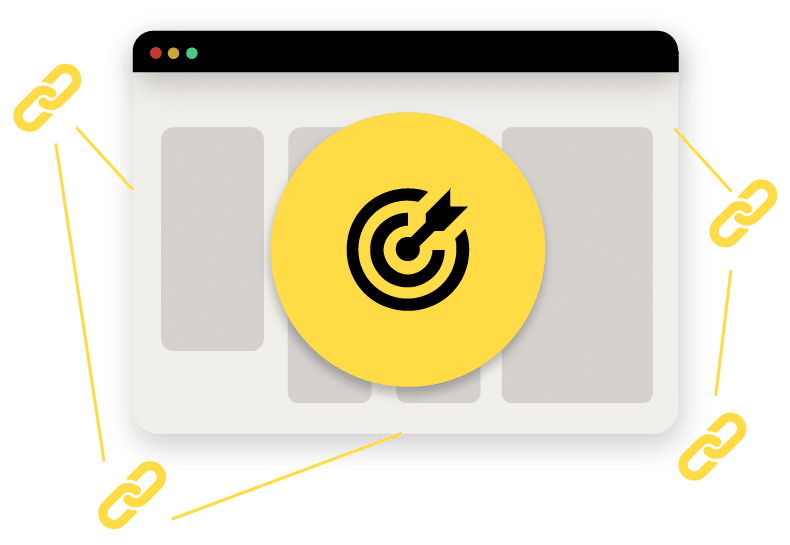The importance of building an efficient international netlinking strategy to scale your business abroad
When it comes to expanding your business abroad, working on your netlinking strategy as you’d do in your home country may not be enough, or even be counterproductive.
In fact, aspects like costumes, cultural differences, and language can impact both users’ and search engines’ behaviors – making SEO principles slightly differ according to the region.
Not only ignoring such differences will lead your business to miss market opportunities – it will make you waste precious resources such as time and money investments.
With such possible negative outcomes, it is crucial that you develop a strategic approach to your netlinking, that takes into account each country’s uniqueness and peculiarities.
But how can you build an efficient international netlinking strategy?
Let’s go over international netlinking in detail and see what it takes exactly to develop a winning SEO approach to target countries that differ from yours.
What exactly is an international netlinking strategy and what are its benefits?
An international netlinking strategy consists of a plan for building links from websites in other countries back to your own.
You may be interested in it when looking to scale your business in new markets, and trying to develop a solid presence abroad.
Ultimately, the goal of an international netlinking strategy is to establish your website as a reliable source in your target countries, drive traffic to it, and improve your search engine rankings in those markets.
Though, it can lead your business to many other different benefits, like enhancing your credibility and increasing your chances of starting collaborations with foreign partners.

Top 5 best practices to build an efficient international netlinking strategy
To help you develop a solid international netlinking strategy, we have selected the most effective and up-to-date practices you should include in your approach.
Here are our picks:
1. Identify and study your target country
Every digital marketing professional knows the importance of solid and in-depth market research.
Without a proper analysis of who your public is, what their interests are, and what language suits them the most, you will likely waste both effort and money.
This applies to SEO, too.
As we have seen, every country has its own set of costumes and rules that influences the behavior of users, and how search engines answer their needs.
So, the first step of building a powerful netlinking strategy is identifying and studying your target country and its people.
You can’t really tell what measures and moves to take, if you don’t know who you’re aiming to reach.
Begin by asking yourself some key questions, like what the most used keywords in your target country are.
Even though this may seem trivial, it is not.
For instance, you may get deceived by the fact that your target country speaks the same language as yours, but this doesn’t mean they share interest in the same keywords.
Ultimately, make sure in the first place your website is reachable for specific queries, so that other writers may use your information as a source and help you get backlinks to your site.

2. Build solid digital press relations
Press releases are among the most effective tools you can use to make your brand discoverable and establish your presence in unexplored markets.
Through press releases, in fact, you can aim to get press coverage, making your brand get featured in local news by publishers that are relevant to your area of expertise.
This has two major benefits.
First, such a strategy allows you to reach your target audience through the voice of sources they trust, like digital newspapers that are considered to be authoritative in their country.
The backlinks you’ll get from foreign publishers will increase the discoverability of your content, helping both people to find out who you are and Google to show your content to your public next time.
On top of that, building relations with journalists and bloggers is a perk that may come in handy in the future.
By creating a solid network of professionals in your target country, indeed, you open your way to plenty of opportunities and collaboration.
For instance, you may access a network of local influencers and consider starting a partnership with some of them, which leads us to our next suggested practice:
3. Build relationships with local influencers
Local influencers may be your trump card when trying to build an efficient international netlinking strategy.
By establishing a collaboration with a popular influencer in your desired country, you’ll likely access numerous potential sources of backlinks pointing toward your website.
Indeed, even though many influencers are mostly active on a specific social network, most of them can rely on a solid digital presence through numerous platforms.
For instance, you may hire an influencer that has an account on Instagram, TikTok, or Facebook, but that also has a personal blog.
Some of them may even use a resource list or a recommended reading list that they can directly share with their followers.
Ultimately, relying on local influencers will help you get backlinks pointing to your website and spread your word in your desired country through a figure your public is more likely to trust.
4. Refresh and localize your content
If you want to appeal to an international audience, it’s important to make sure your content is easily understandable to people in other countries and languages.
Even though a fairly relevant percentage of people globally speak more than a single language, having your content available only in a few idioms will make you miss numerous market opportunities.
A fewer languages means a smaller reach, and fewer chances of getting backlinks from publishers that only link to websites with content in the same language of their country.
So, consider translating your content into the languages of your target nations.
Optimize your website for local search by conducting proper keyword research, and including relevant terms and phrases with a high search volume for your target market.
This will increase your discoverability, helping you both to get backlinks from foreign websites citing you as a source and drive higher direct traffic to your content.
5. Aim for authoritative publishers in your target country through sponsored content

Not all backlinks are the same, and every SEO professional or digital marketing expert knows that.
When building an international netlinking strategy, many marketers make the mistake of focusing on the quantity of backlinks they can amass, rather than their quality.
The results are detrimental: from websites that are invisible in the SERPs, to lots of money and effort wasted and great frustrations that reflect into other areas relevant to the business.
That’s why, if you’re looking to build a really efficient international netlinking strategy, you should aim for reliable publishers only from the country you’re targeting.
You will benefit the most from what is often referred to as ‘premium media’ – popular and authoritative publishers with strong SEO metrics, such as domain authority, domain rating, and a large volume of high-quality backlinks.
Some examples of premium media include Le Figaro for France, El Mundo for Spain, and Il Corriere della Sera for Italy. All of them are renowned voices in their specific country.
According to studies, a single link from a premium media source may be as effective for your netlinking strategy as fifty links from less authoritative websites.
So, how can you access premium publishers to make your international netlinking strategy benefit from them?
The answer comes down to sponsored content.
With such a strategy, your brand pays a publisher to distribute content that resonates with its values and that helps you build a strong positioning in the country you’re targeting.
Sponsored content can have a positive impact both on your reach and on your SEO, helping you get the high-quality international backlinks you’re looking for.
Build a solid international netlinking strategy with Getfluence
Targeting new countries has never been easy – you get to expand your business in unexplored markets and risk-your-all to get things done in the right manner.
When done wrong, international netlinking is more harmful than beneficial, as it may harm the reputation of your brand abroad, as well as result in wasted time and resources.
But has it really to be this way?
With Getfluence, you can build a solid international netlinking strategy that is going to last through time and help your business establish itself as a renowned voice in your target countries.
As a sponsored content marketplace with over 10.000+ premium publishers from all around the world, Getfluence can help you get backlinks from the most renowned premium media in your target market.
You can use it to build your international netlinking strategy while saving up to 70% of your time, thanks to its easy-to-use, simple, and fast platform.
Finally, you won’t have to worry about wasting any resources, due to the competitive rates that Getfluence has pre-negotiated with all of its partners.
Build your international netlinking strategy with Getfluence now.
Most asked questions about international netlinking
What is an international netlinking strategy?
An international netlinking strategy is a plan for building links from websites in other countries back to your own. Businesses may be interested in it when looking to expand in new markets, and trying to develop a solid presence abroad.
Why is international netlinking important?
International netlinking is crucial to allowing your business to expand abroad. Without a proper international netlinking strategy, your business won’t be discoverable and it won’t have a voice in the countries you’re targeting, which impacts negatively its trust and its reach.
Should I translate my content to launch my business abroad?
Even though a good percentage of people globally speak more than a single language, not translating your content in the idiom of your target market will make you have a smaller reach and miss netlinking opportunities from publishers writing only in different languages.





